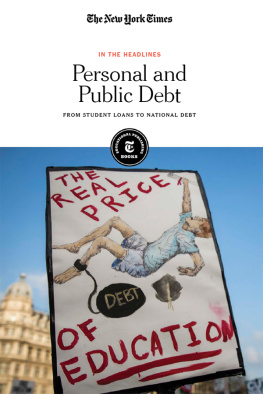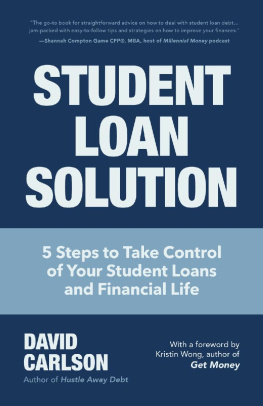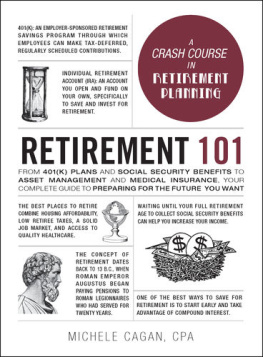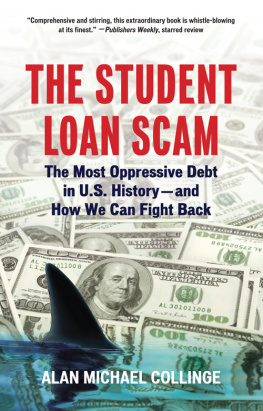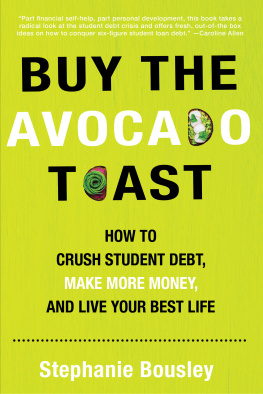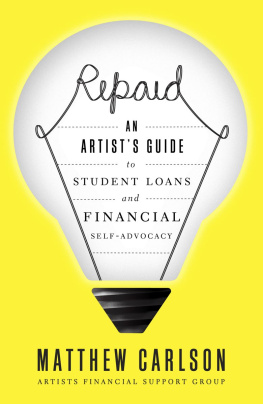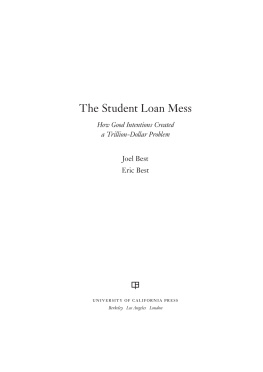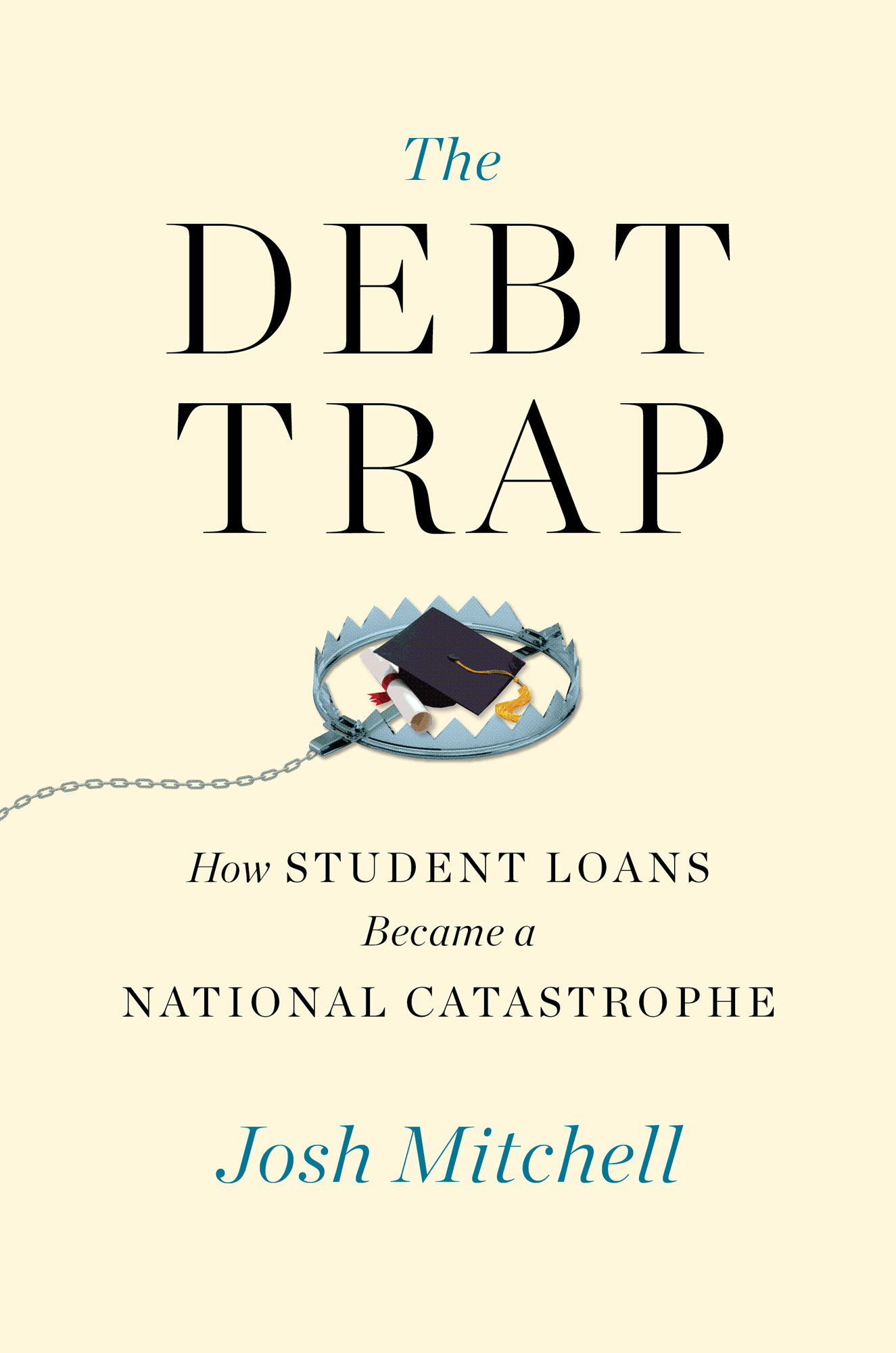Contents
Guide
The Debt Trap
How Student Loans Became a National Catastrophe
Josh Mitchell
For my mom, who taught me how to laugh, even when times were tough
Kathleen Diane Mitchell 19512017
Introduction
L isas lawyer needed an answer.
The government isnt budging, her bankruptcy attorney said on the other end of the line. How much more money should we offer?
It was Monday, August 13, 2018. The midday sun beat down on Lisa as she stood in a plaza dotted with palm trees at the University of South Florida in Tampa, pacing in front of the doors to the student center, phone pressed to her ear, as she discussed her fate with the attorney, Bob Lohr.
She had just dropped off her 18-year-old daughter, Stephanie, for freshman orientation. The long drive down I-95 from their home in Chester, Pennsylvania, had been eerily quiet. Stephanie, normally bubbly, had jitters about starting college in a new city. Lisa didnt feel like talking, either. She was suffering another bout of agony over her own student debt. She had been paying off her federal student loans for 17 years, starting when Stephanie was an infant. Lisa still owed nearly $100,000. She worried she would go to her grave with it.
In a prior generation, a mother dropping off her daughter at college would be cause for celebration, the first step toward the American Dream. In 2018, Lisa, a 54-year-old single mother of two, was two years into bankruptcy in a seemingly endless struggle with the U.S. government over the price of her education.
Before Lisa, no one in her family had gone to college. In the early 1990s, she was a secretary in her 20s when she decided to give college a shot. She enrolled at Fairleigh Dickinson University, a private college across the street from her work. As her studies progressed, she realized that her dream of becoming a psychologist required a graduate degree, thanks to state licensing rules. After she received her undergraduate diploma, she enrolled in a graduate program at nearby Widener University. As she piled new loans on top of old loans, the financial counselors at each school reassured her that student debt was good debt, an investment in her future.
Exhibit 1 of her bankruptcy documents listed how much she had sent over the years to Sallie Mae and its spinoff, a company called Navient, to repay her student loans. Month after month, year after year, she mailed off those payments, each check for more than $700. After some 160 checks, she had paid $135,603.34. Most of it, $100,000, went toward interest, padding the profits of Sallie Mae. Her balance now sat at $96,820. At this pace shed be well into retirement before it was paid in full.
Exhibit 2 was the document from Main Line Health laboratories, dated 08-31-2016. LEFT BREAST, it said, followed by these words underlined in pen: WELL-DIFFERENTIATED LOBULAR CARCINOMA.
Congress, hoping to claw back every penny it lent to students, had made it so hard for borrowers to discharge student loans in bankruptcy that Lisas breast cancer wasnt a sufficient reason to escape her debt. Thats what the lawyers representing the U.S. Department of Education told the judge.
How could this happen? she had asked herself over and over.
Her daughter Stephanie was about to get into student debt herself. Instead of the American tradition of parents passing wealth to their offspring, daughter was about to join mother in debt. Lisa cringed at the thought that Stephanie might be headed for the same fate: years of sleepless nights worrying about how shed ever pay it all as her children slept in a bedroom nearby.
As she paced in front of the student center, Lohr told her the government wanted another 14 years of payments totaling $150,000. She reflected on the years of payments, the times when the student loan bill came before putting away savings for her childrens college education, how it had prevented her from having a house with a yard. She thought about how she might not have much longer to live.
No, she told Lohr. She wouldnt do this anymore. Give them my retirement money, she said defiantly.
I dont think theyre going to accept that, Lohr said.
I dont care, she replied. She was done living under the cloud of student debt.
She logged into her Vanguard account, snapped a screenshot of the balance$12,086.43and emailed it to him. It was all she had. And it was all the government was going to get out of her, she said.
How could this happen?
Millions of Americans have asked themselves Lisas question. Today, 43 million people owe $1.6 trillion in student debt, an amount that has tripled since 2006. Americans owe more in student debt than they owe in credit card debt and car loans. Combined, student debt in the U.S. is the size of Canadas economy.
The program began with good intentions, as a way to pry open the gates to Americas respected universities. By the late 20th century higher education had become intertwined with the American experience. It embodied the nations promise of upward mobility: If you could get into college and worked hard enough while there, you were guaranteed a lifetime of success. For millions of Americanspoor and middle-class, fifth-generation and new immigrants alikecollege was the first step on the ladder to prosperity in the worlds biggest and most dynamic economy.
Elected leaders wanted to give every American the chance at that prosperity by removing the financial barrier to college and graduate school. They did so by providing loans, combining the American ideals of education, upward mobility, and individual responsibility. Americans would be guaranteed a shot at the American Dreamwhile paying their own way, without a handout.
Families put their faith in institutionsCongress, banks, universitiesas they signed up for loans. They assumed those institutions had their best interests at heart. Students thought they were making an investment, and in fact they were told they had no choice. Radical shifts in the U.S. economy placed growing emphasis on the need for a degree to succeed. College wasnt a luxury but an economic imperative.
For too many, that investment has gone bust.
Far from making college more affordable, student debt enabled schools to raise tuition faster than family incomes, creating a higher-education industrial complex that has driven up the price of college and graduate school to unprecedented levels. Average tuition and room and board at four-year private colleges has risen nearly 800 percent since 1980, more than five times the rate of inflation. Today a four-year degree at a private college costs nearly $200,000 on average, before discounts. The same degree at a public college costs more than $100,000 on average. Scholarships and grants bring the price down for many students, but the average obscures massive problems.
A substantial and growing share of students pays far more than the average and gets into tens of thousands of dollarsand in some cases hundreds of thousands of dollarsin debt just for a shot at making it in todays economy. At the University of Alabama, a state flagship profiled in this book, most students come from out of state and pay $45,000 per year, or $180,000 over four. Even after grants and scholarships are factored in, many Alabama students and their parents take on tens of thousands of dollars in debt, and in some cases more than $100,000.



